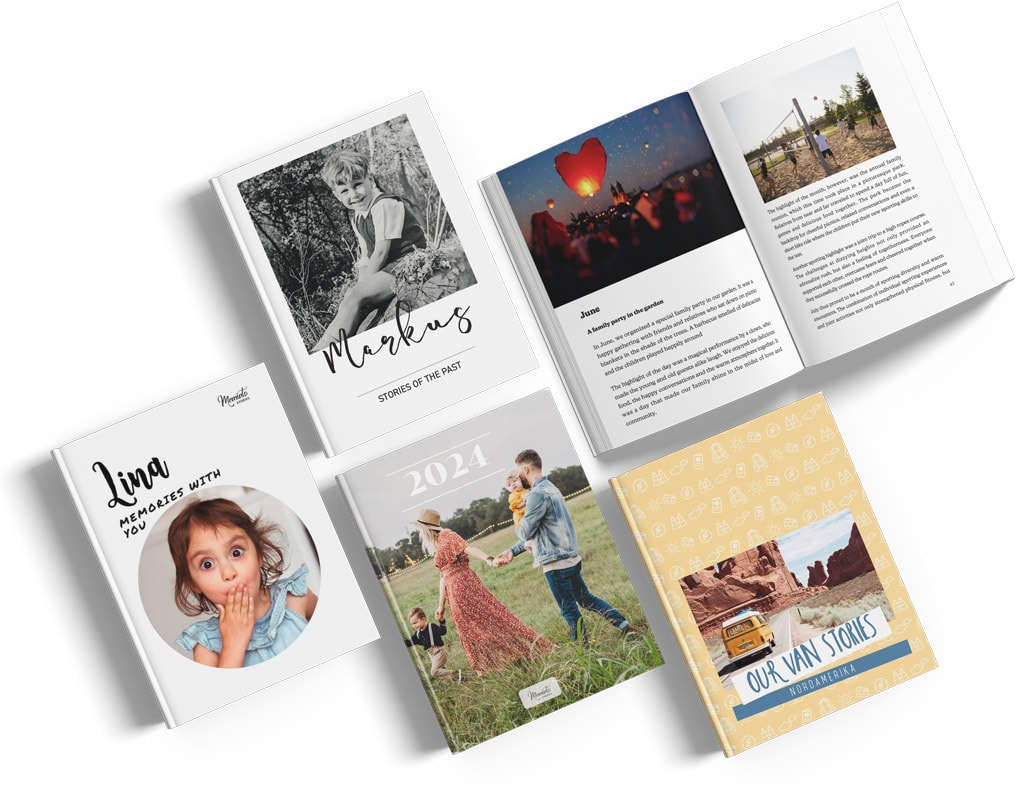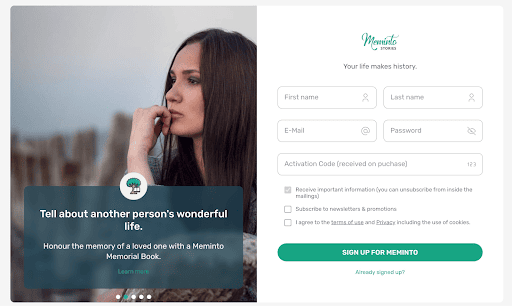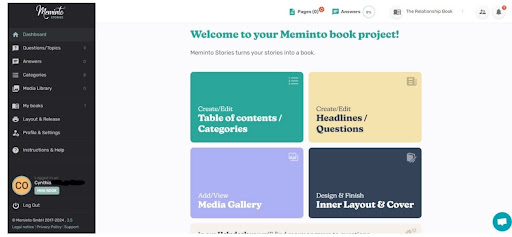Writing an autobiography can serve many purposes. It could be for a college application, a job opportunity, or to inspire others with your story. Whichever one it is, you want to write it in such a way that leaves an impact.
But how do you start? In this guide, we’ll show you a simple and enjoyable way to outline your autobiography, so you can organize your thoughts and capture the key moments of your life. Plus, we’ve included a free PDF download to make the process even easier! What is an autobiography?
Let’s get started with the basics.
Key Takeaways
- Whether you choose a chronological or thematic structure, your autobiography should focus on the moments and lessons that have shaped your life, offering a true reflection of who you are.
- A clear outline is essential for writing an engaging autobiography. Choose a structure that best fits your story. It could be chronological for a step-by-step account or thematic to highlight key themes and experiences.
- Be honest and personal in your writing. Sharing your real experiences, challenges, and growth will make your autobiography resonate deeply with your readers.
What Is an Autobiography?
An autobiography is a self-written account of your life. That means you are authoring your life story. It covers significant events, experiences, and milestones, often highlighting personal growth and key moments that shaped who you are today.
Unlike biographies, which are written by someone else, autobiographies allow you to share your perspective directly. It gives readers insight into your thoughts, emotions, and decisions. Whether formal or casual, autobiographies give a clear and personal view of your life’s journey.

What are the Key Elements in an Autobiography?
To write an effective autobiography, you need to include certain elements that help structure your story and keep readers engaged. These are the main components you should focus on:
Character
The character element in an autobiography is where you give a detailed description of yourself. This part provides readers with essential context about who you are, where you come from, and what has shaped you into the person you’ve become.
Start by describing your background. This includes where you were born, the environment you grew up in, and key details about your family. Mention things like your cultural roots, upbringing, and any influential people in your early life. This helps paint a clear picture of your origins and gives the reader a sense of your foundational values and beliefs.
You should also touch on aspects of your personality. How others might describe you and how you see yourself. Are you more introverted or outgoing? What qualities have you been known for throughout your life? Including these characteristics makes your story more relatable and helps readers connect with you on a personal level.
Ensure to provide these personal details so you can set the stage for the rest of your autobiography. This will also give readers a better understanding of the experiences and events that follow in your story.
Chronological Structure
Your autobiography can have a chronological structure. That means organizing your life story according to the sequence in which events occurred. This approach helps readers follow your journey in a clear, logical order, starting from your earliest memories and progressing through significant stages of your life.
Begin with your birth and childhood, then move through key periods such as adolescence, young adulthood, and beyond. Each section should cover important events, experiences, and transitions that occurred during that time. By sticking to the timeline, readers can see how one event led to another and how your experiences have shaped who you are today.
This structure also ensures that your story flows naturally and avoids confusion. That’s because it mirrors the way we typically think about our own lives, with one event building upon the next. It’s a straightforward way to give readers a full picture of your personal growth over time.
Thematic Structure
Your autobiography can also have a thematic structure. That means you focus on organizing the narrative around central themes or ideas rather than following a strict chronological order. Instead of presenting your life as a series of events that occurred in a timeline, you group experiences based on recurring subjects, such as family, career, love, or personal growth.
Here’s how it works:
- Identify Core Themes: Think about the major themes that have shaped your life. For example, if your life has been heavily influenced by perseverance, family dynamics, or cultural identity, these can become the focal points of your autobiography.
- Organize by Themes, Not Time: Instead of starting with your birth and ending with the present, arrange your story around these themes. Each section of your autobiography will explore one theme in depth, drawing from different periods in your life to illustrate that theme.
- Integrate Key Life Events: Even though you’re organizing the story by themes, you still reference key life events. However, these events will appear in the sections where they fit the theme, even if they happened at different times. For example, you might talk about a childhood event and a recent event in the same section if they both relate to the theme of resilience.
This structure is particularly useful if certain themes have played a significant role throughout your life. It lets you explore those themes in greater depth rather than focusing strictly on a timeline.
Key Life Event
Your key life events are the significant experiences and milestones that shape your identity and influence your journey. In an autobiography, these moments are crucial as they highlight turning points, challenges, and achievements that define your life story.
When discussing key life events, focus on experiences that had a profound impact on you, such as:
- Major Accomplishments: This could include educational achievements, career milestones, or personal successes that made you proud. Explain what these accomplishments meant to you and how they contributed to your development.
- Challenges and Struggles: Share any obstacles you faced, such as health issues, family crises, or personal setbacks. Describe the circumstances surrounding these challenges, how you dealt with them, and what you learned from the experience.
- Transformative Experiences: These could be events that changed your perspective or altered the course of your life, such as travel, moving to a new city, or meeting influential people. Discuss how these experiences shaped your beliefs, values, and aspirations.
When you include these key life events, you provide readers with insights into your journey. It will help them to understand the pivotal moments that have influenced your choices and character. These stories add depth and relatability to your autobiography, making it more engaging and impactful.
Setting – Vivid Details
The setting in an autobiography provides the backdrop for your life experiences, helping readers visualize the environments that have shaped your journey. This includes the physical locations where significant events occurred, as well as the cultural and social contexts surrounding those moments.
When describing the setting, aim for vivid details that immerse readers in your story. Here are some aspects to consider:
- Geographical Locations: Specify the places where you lived, grew up, or spent significant time. Describe the characteristics of these locations. Are they urban or rural? What are the landmarks, weather, and scenery like? These details help create a mental image for readers.
- Cultural Context: Share information about the cultural, social, or historical background of the places you’ve lived. This can include traditions, community values, or societal challenges that influenced your experiences. Understanding the cultural context allows readers to grasp the environment in which you developed.
- Emotional Atmosphere: Convey the emotions associated with these settings. How did you feel in certain places? Did they bring you comfort, joy, or anxiety? Sharing your emotional connection to various settings helps readers relate to your experiences on a deeper level.
With these vivid details about the setting, you enrich your autobiography and create a more engaging narrative.
Author’s Purpose
The author’s purpose in an autobiography is the reason behind writing the story. Understanding and conveying this purpose is crucial, as it guides the tone, structure, and focus of the entire narrative. Typically, an autobiography can serve one or more of the following purposes:
- To Persuade: Some autobiographies are written to inspire or influence readers by sharing life lessons, values, or viewpoints. If your goal is to persuade, you might emphasize experiences that show personal growth, resilience, or important causes you believe in. Your story becomes a tool to encourage others to think or act in a certain way.
- To Inform: If your purpose is to inform, the autobiography focuses on providing factual details about your life in a clear and organized manner. This could be important when writing for a specific purpose like a college or job application, where the goal is to give readers an accurate picture of your experiences, skills, and background.
- To Entertain: Autobiographies can also entertain by engaging readers with humorous, emotional, or dramatic stories. If entertainment is your goal, you might focus on sharing memorable anecdotes, unusual experiences, or lighthearted moments that make your story enjoyable to read.
Identifying your purpose helps you shape your autobiography’s narrative. It ensures that each event and experience you include serves the overall goal of your story.
Reflections
Your reflections in an autobiography offer insight into how the experiences and events you’ve shared have impacted you on a deeper level. This is where you step back and think about what you’ve learned from your journey, how your perspective has changed, and how these moments have shaped the person you are today.
When writing, focus on:
- Personal Growth: Discuss how certain life events helped you evolve, whether they changed your outlook on life, influenced your decisions, or helped you overcome personal limitations. Reflect on how challenges made you stronger or more resilient.
- Lessons Learned: Share the key takeaways from both positive and negative experiences. What did a particular challenge teach you? How did an achievement shape your future goals? Offering these insights gives readers a sense of how you’ve matured and developed over time.
- Impact on Values and Beliefs: Reflect on how your life experiences have influenced your core values, principles, and beliefs. Did certain events lead you to rethink what’s important in life? Have your experiences shaped the way you view relationships, careers, or success?
Reflections make your autobiography more than just a series of events. They add depth, helping readers understand the meaning behind the moments you’ve shared. That way, they can connect with your story on a more personal level.
Authenticity
Authenticity is the foundation of a powerful autobiography. You want to maintain being truthful and genuine in sharing your life story. Ensure you present both the highs and the lows with honesty. Readers connect more deeply with stories that feel real, where the author isn’t afraid to be vulnerable or reveal imperfections.
To ensure authenticity:
- Be Honest: Share your experiences as they truly happened, without exaggeration or distortion. Whether you’re talking about personal achievements or failures, honesty builds trust with your readers.
- Show Vulnerability: It’s important to share not only your successes but also your struggles, mistakes, and insecurities. These moments of vulnerability make your story relatable and human.
- Stay True to Your Voice: Write in a way that feels natural to you. Don’t try to sound like someone you’re not. Authenticity comes through when you use your unique voice, sharing your personality and perspective with readers.
- Avoid Clichés or Over-Editing: Stick to the details that matter most to you. Over-polishing or relying on clichés can make your story feel impersonal. Stay true to your experiences, even if they don’t always follow a perfect narrative arc.
Author’s POV- first person
In an autobiography, the point of view is always first-person, meaning you are telling your story directly from your own perspective. This allows you to share your thoughts, feelings, and experiences in a personal and intimate way.
Ensure to use “I” statements. Since you’re writing about your own life, naturally, the narration should be in the first person. Phrases like “I experienced,” “I learned,” or “I felt” help convey your direct involvement and make the story feel more personal.
Conclusion
Your conclusion in an autobiography serves as the final reflection on your journey. It’s where you tie everything together, summarizing the key themes, lessons, and experiences you’ve shared. This is your chance to leave readers with a lasting impression of your story and what it all means to you.
In your conclusion:
- Summarize Your Journey: Briefly recap the major events and themes you’ve covered, emphasizing how they’ve shaped who you are today. This helps readers understand the overall arc of your life story.
- Highlight Key Takeaways: Reflect on the most important lessons you’ve learned throughout your life. What wisdom or advice would you share with others who may relate to your experiences?
- End with a Forward-Looking Statement: You can close your autobiography by discussing where you are now and what’s next for you. This gives a sense of continuity and shows that your story, though concluded in the autobiography, is still ongoing.


How do you Write an Outline for an Autobiography + Template
Writing an outline for your autobiography helps you organize your thoughts and ensures that your story flows logically. We discussed earlier in the article that your autobiography could be thematic or chronological. Let’s explore how to write an outline for each below;
Chronological Structure
- Start with the Purpose: Determine why you’re writing your autobiography. Is it for personal reflection, a college application, or to inspire others? Knowing your purpose will shape the tone and focus of your outline.
- Create a Timeline of Key Events: List the major events and milestones in your life in chronological order. This could include:
- Birth and early childhood
- Education and formative experiences
- Family life and relationships
- Career and accomplishments
- Personal challenges and growth
- Break It Down into Sections: Divide your timeline into sections based on different phases of your life. For each section, focus on the most important events and how they shaped you.
- Add Transitions: Think about how to connect each section of your life story. Smooth transitions help your story flow naturally from one stage to the next.
- Conclude with Final Thoughts: Outline how you want to end your autobiography. Reflect on your journey, summarize the key lessons, and offer a forward-looking perspective.
The Diary of a Young Girl” by Anne Frank is one popular example of an autobiography told in chronological order. Written during her time in hiding during World War II, the book presents her experiences as they happened, following a linear progression of her days, thoughts, and feelings. The diary entries are written in the order they occurred, giving readers a clear view of how her life unfolded during that challenging period.
Thematic Structure
- Introduction: Begin by introducing the purpose of your autobiography. Why are you telling your story? Mention the key themes you’ll be exploring. Then, offer a short preview of what readers can expect. You can hint at the major themes that have shaped your life (e.g., resilience, love, career growth, cultural identity.
Now, since we are writing an outline based on them, you can continue by stressing specific ones:
- Theme 1: Family and Relationships
- Describe experiences related to family and important relationships, whether they were supportive or challenging.
- Impact: Discuss how these relationships have influenced who you are today. How have family values, friendships, or love shaped your personality and decisions?
- Theme 2: Overcoming Challenges and Personal Growth
- Key Events: Focus on times when you faced significant challenges (e.g., financial struggles, health issues, personal setbacks).
- Impact: Explain how these obstacles contributed to your personal growth. What lessons did you learn? How did overcoming these challenges shape your character?
- Theme 3: Career and Passion
- Key Events: Highlight major career achievements, failures, or pivotal moments that defined your professional journey.
- Impact: Reflect on how your passion for your work has evolved. How has your career shaped your identity and long-term goals? Include moments when career choices affected other aspects of your life (e.g., family, personal fulfillment).
- Theme 4: Cultural Identity and Values
- Key Events: Explore how your cultural background, societal values, or traditions influenced your life decisions and worldview.
- Impact: Discuss how your cultural identity has shaped your outlook on life, relationships, and your place in the world. Reflect on specific events or phases in life where your values were tested or deepened.
- Theme 5: Major Accomplishments and Legacy
- Key Events: Cover the milestones that represent success in your life—personal or professional. These can range from career highlights to community contributions or personal achievements.
- Impact: Reflect on the meaning of these accomplishments. What do they say about your journey, and how do they fit into your legacy? What kind of impact do you want to leave behind?
- Conclusion: After touching as many themes as you want, summarize the major ones you’ve covered and the most important lessons you’ve learned. End with a thought about the future. How will the lessons you’ve learned continue to guide you? What’s next in your journey?
Maya Angelou’s autobiography is a great example of a thematic structure. Instead of following a strict chronological timeline, the book is organized around themes of identity, racism, resilience, and self-discovery.
She recounts significant moments from her childhood and adolescence, but these experiences are grouped thematically to highlight broader topics like the struggle for dignity, the influence of family, and the development of her voice as a writer and activist.
Free Download Autobiography Outline Template in PDF
Below are free downloadable autobiography outline templates curated to get you started:
Chronological structure – Inspired by Anne Frank
Thematic structure – Inspired by Maya Angelou
How to Write an Autobiography with Meminto
- Go to https://meminto.com/product/life-book/, then click on “Start Now”
- Select who will author the book by choosing either “I Will” or “Someone Else Will.”
- Choose the number of pages and input any other options you prefer. This will generate your total, then click “Add to Cart.”
- Type in your shipping details and select how you’d like to pay. If you have a promo code, apply it to get a discount.
- Review and Confirm your order, then track your delivery status from the checkout page.
- Go to your Email for confirmation and activation code, then visit memin.to/register.
- Enter your personal information, activation code, and password. Click “Sign up for Meminto” to start writing your story.

Personal details - Choose your language preference between English and German, then set the day you’d like to receive memory prompts.
- Personalize your memory book by choosing your design preferences.
- Customize the book to fit your needs.

11. Watch the instructional video below so you can get better guidance on how you can use the Meminto app.
Final Words
Your story is one-of-a-kind, and how you tell it is up to you. Whether you’re writing to reflect on your life or inspire others, embrace honesty and enjoy the process. Focus on what really matters, that is, the experiences and lessons that define you. And with the templates and insights from this guide, you can outline and write an autobiography that truly connects with your readers.
Now, it’s your turn. Enjoy every bit of writing your autobiography!



















